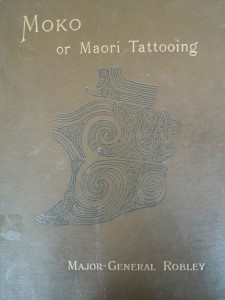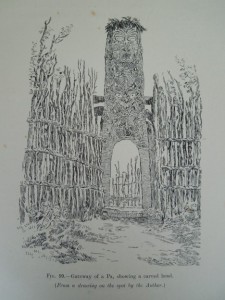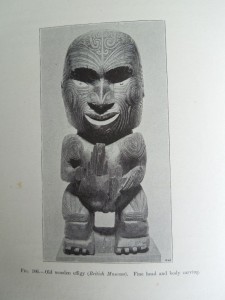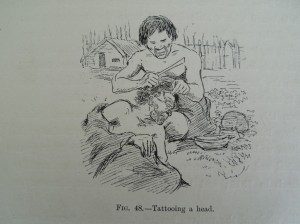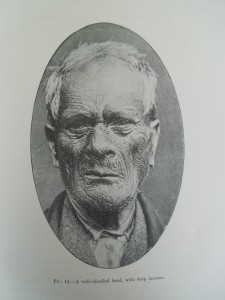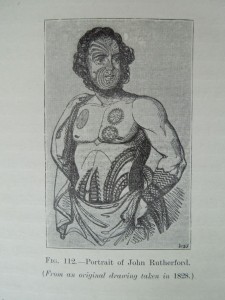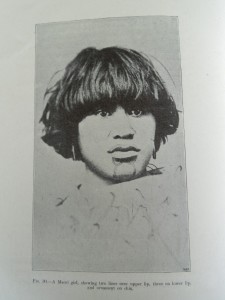An update from the CRC Cataloguing Interns Beth and Fiona
Moko or tatooing is a crucial part of Maori culture, reflected in many of their carvings and art work, and early examples of this practise are amazingly well preserved in some photographs and drawings in Major-General Robley’s 1896 work: Moko, or Maori tattooing, one of the many fascinating books in the New Zealand Collection.
The draughtsman of Captain Cook, Sydney Parkinson, was first to draw the Maori tattoos in 1769, capturing their intricate designs and an art which was to decline rapidly with the arrival of the European missionaries and settlers who disapproved of the practise. In recent years, however, it is making a comeback using modern tattooing methods, and in this work we can see how these tattoos were made from the earliest times. 
The Moko process was extremely painful, and would produce a raised scarring with charcoal black staining, as can be seen in some of the photos of the Chiefs. The tools used were a chisel called the Uhi, made from bone, tooth, or later iron, dipped in charcoal, and driven into the skin with the tap of a mallet called He Mahoe. On occasion the Uhi would pierce the skin and Robley describes seeing a Chief’s pipe smoke coming out of such a wound in the cheek.
The most exhaustive description in English of a Maori tattooing, was that of John Rutherford, who was captured in 1816, along with several of the crew of his ship, the Agnes. He was one of the first westerners to be tattooed and gives a detailed description of this painful 4 hour process: we can see his extensive tattoos in his portrait. Facial tattoos were particularly important, and not just confined to the men: women often had at least some decoration around their mouth and such tattoos, in men and women, were designed to highlight and enhance their natural features as well as to display their status.
Within Maori culture, at that time, a person was so defined by their tattoos that these came to represent who they were and there are several examples of Maori chiefs signatures which consisted of drawing of their own facial tattoos, as can be seen in several facsimiles of treaties reproduced in this work.
